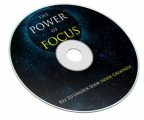Salespage Snapshot

Table of Contents
Forward
Chapter 1: Ten actions
Chapter 2: What is Worry?
Chapter 3: Reduce Worry
Chapter 4: Recognizing Worry is Within Yourself
Chapter 5: 15 Things That You Can Do Without Worry
Chapter 6: What Worry Can Do
Chapter 7: Beating Financial Worries
Chapter 8: Using Yoga
Wrapping Up
Sample Content Preview
Chapter 2: What Is Worry
“Worry turns a small thing a big shadow” The Dictionary gives us the following definition: To feel uneasy or concerned about something; be troubled.
Worry is that sense of fear that can overcome you in relation to your work or an illness or other situations. A few individuals even suffer from panic attacks where their level of worry is so high that it’s debilitating. We worry about the future believing that we are totally helpless as to influencing what will happen next in our lives. I have come to trust that we are not helpless in every aspect of our lives.
Worry (or anxiety) is normal in life
Too much worry is harmful
The primary form of worry is the sense of vulnerability and powerlessness.
What Is Worry?
“Worry turns a small thing a big shadow”
The Dictionary gives us the following definition: To feel uneasy or concerned about something; be troubled.
Worry is that sense of fear that can overcome you in relation to your work or an illness or other situations. A few individuals even suffer from panic attacks where their level of worry is so high that it’s debilitating. We worry about the future believing that we are totally helpless as to influencing what will happen next in our lives. I have come to trust that we’re not helpless in every aspect of our lives.
In most cases, we worry about matters that have not happened or something that we imagine will occur. Worrying has a tendency to lead our imagination in the negative direction. We typically do not worry about stuff that is beneficial to us or gives pleasure; we worry about things that we think will hurt us in one way or another.
– Worry is normal in life
– A great deal worry is harmful
– The primary form of worry is the sense of vulnerability and powerlessness.
– A worrying individual thinks that these times of worry are triggered by things that happen in day-to-day life and is not controllable by us.
– Many individuals worry because of a loss of faith in something.
– “What ifs” can lead to a mess of worries.
Worry can take many forms. For the most part a little worry is normal. Anxiety is the body’s natural response to threat. It sets us UP for fight or flight. All the same, if the energy made available by worry is not used then it starts to build up causing harm in the end.
Worry affects several things. When we worry, our body begins to pump out a range of chemicals (such as adrenaline) that increase the flow of blood and oxygen to your brain and skeletal muscles. Your blood also clots quicker, ready to fix any injuries you sustain in your “fight or flight”.
Your body certainly goes through changes when we worry. You can probably hear your heart pounding stronger or perhaps even sweat starting to form. You might be able to feel the anxiety rise in yourself, which causes you to shake or become agitated. These are all effects of worry and stress. Naturally, if this happens often and there really is not fighting or running away to use the energy and resources that the body provides then issues will occur over a time.
You may be all keyed up with nothing to fight or flee and no way to turn off the tension chemicals. You become a time bomb that is not allowed to explode-consequently, you may implode. If this happens often, it can have a dangerous effect on your health.
Every system in your body is affected by worry. Besides raising blood pressure and increasing blood clotting, worry can prompt your liver to produce more cholesterol, all of which can raise your risk of heart attack and stroke. Muscle stress can produce headaches, back pain, and other body aches. Worry can also trigger an increase in stomach acid and either slow or speed up muscle contractions in your intestines, which can lead to stomach aches, constipation, diarrhea, gas or heartburn.
Worry can affect your skin as well. It can affect your respiratory system and aggravate asthma. Growing evidence even proposes that chronic worry can compromise your immune system, making you more vulnerable to bacteria, viruses, and perhaps even cancer .there’s one thing that worrying does not do. It does not make the situation better. Therefore, we should find an alternative to worrying so that we have less worry and stress in our lives.
Chapter 3: Reduce Worry
Luckily, there are methods that you are able to learn and practice that can be valuable for decreasing worry. However, because worrying is a habit that has been well practiced, you should recognize that it will take frequent practice to cut back the habit of worrying.
The more the strategies are rehearsed, the stronger the new habit becomes and the weaker the old habit of worry becomes. This will take some drive in the beginning.
In addition, it is crucial to recognize that what works for one person might not work for another. Because each individual is unique, the way in which he or she worries, and the best ways for that individual to learn to cut down his or her worrying, may vary.
The most effective way to decrease worry is to select a technique and rehearse it. If after a couple of weeks of conscientious practice you do not notice a decline in your worrying, it is sensible to shift to another technique and to rehearse that for a while.
The important point is to try a technique before deserting it, and to recognize that while some techniques work well for some cases of worrying, other people might be better for other type worrying. You are able to try combining techniques until you find which combination works best for you
How to Reduce Worry
Luckily, there are methods that you are able to learn and practice that can be valuable for decreasing worry. However, because worrying is a habit that has been well practiced, you should recognize that it will take frequent practice to cut back the habit of worrying.
The more the strategies are rehearsed, the stronger the new habit becomes and the weaker the old habit of worry becomes. This will take some drive in the beginning.
In addition, it is crucial to recognize that what works for one person might not work for another. Because each individual is unique, the way in which he or she worries, and the best ways for that individual to learn to cut down his or her worrying, may vary.
The most effective way to decrease worry is to select a technique and rehearse it. If after a couple of weeks of conscientious practice you do not notice a decline in your worrying, it is sensible to shift to another technique and to rehearse that for a while.
The important point is to give a technique a good try before deserting it, and to recognize that while some techniques work well for some cases of worrying, other people might be better for other types of worrying. You are able to try combining techniques until you find which combination works best for you.
Other Details- 1 Ebook (PDF), 36 Pages
- 2 Graphics (PNG)
- 1 Squeeze Page (HTML)
- Year Released/Circulated: 2017
- File Size: 2,835 KB
License Details:
[YES] Ebook Can be given away against an email address
[YES] Can sell the WHOLE product and keep 100% of the sales
[YES] Can sell the WHOLE product with Resale Rights
[YES] Can sell the WHOLE product with Master Resale Rights
[YES] Can edit the Squeeze & TY + MRR Upsell Pages
[YES] The WHOLE product can be packaged with other products you sell
[YES] The WHOLE product can be offered as a bonus with other products you sell
[YES] The WHOLE product can be added to paid membership sites
[YES] The WHOLE product can be offered through auction sites
[NO] WHOLE Product can be given away
[NO] WHOLE Product can be added to free membership sites
[NO] Ebook can be modified in any way
[NO] Can sell with Private Label Rights














